
True freshman involvement is a non-analytical metric I try to track. There are nuanced circumstances that take away from a true freshman becoming involved in their team’s offense. For instance, a small school true freshman becoming involved would mean less than a Power 5 true freshman doing the same. It stands to reason that a smaller school has less competition at that position than a Power 5 school. So, when I see a true freshman becoming involved at a Power 5 school, that warrants more attention to be paid towards him.
The Prospect
Background, recruitment, etc.
Parker Washington, by way of Richmond, Texas, had fifteen teams that were interested in his talents. More-or-less a who’s who of collegiate programs including Penn State, Wisconsin, Boston College, Indiana, and Nebraska. Washington received a 0.9040 composite ranking from 247sports, which is good for a 4-star rating.
Leaving high school, Washington had a 4.57-second 40-yard Dash time, a 4.13-second 20-yard shuttle and a 37-inch vertical jump, all verified at ‘The Opening Finals’. His freshman size measurements were 5-10 (70 inches) and 201-pounds. If he were to enter the NFL with that profile, he would have a 28.84 BMI, and a 87.96 Speed Score. He already has an elite 20-yard shuttle, which we assume will lead to an impressive Agility Score.
His vertical does not stand out, but it’s respectable in the big picture. These testing numbers were performed during his high school senior season. When he comes to the Combine, his numbers will change, but the question is always with any prospect: Just by how much?
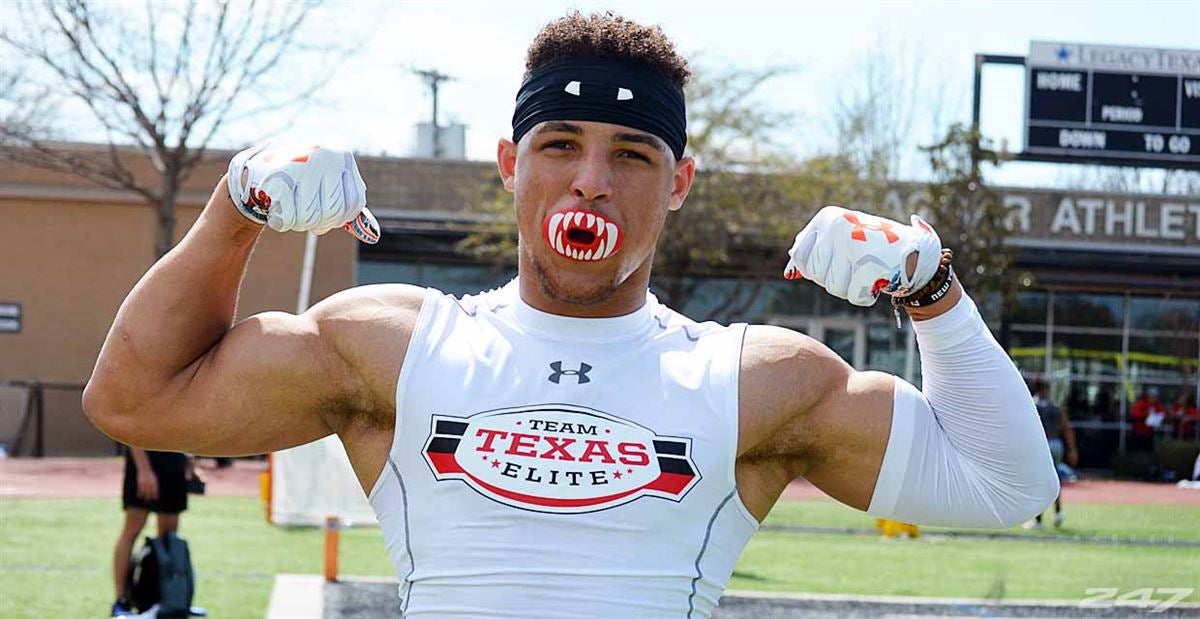
The Test Results, and Digging Deeper
What conclusions can we draw?
Let us take a look at the 2020 first and second round wide receivers to get an ‘elite’ average for an expected increase in testing numbers:
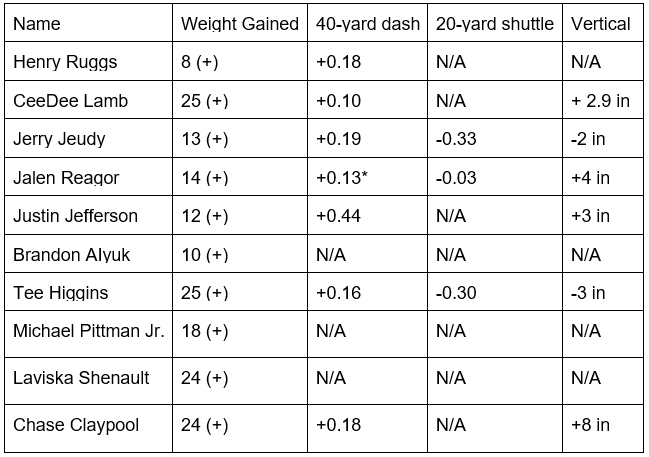
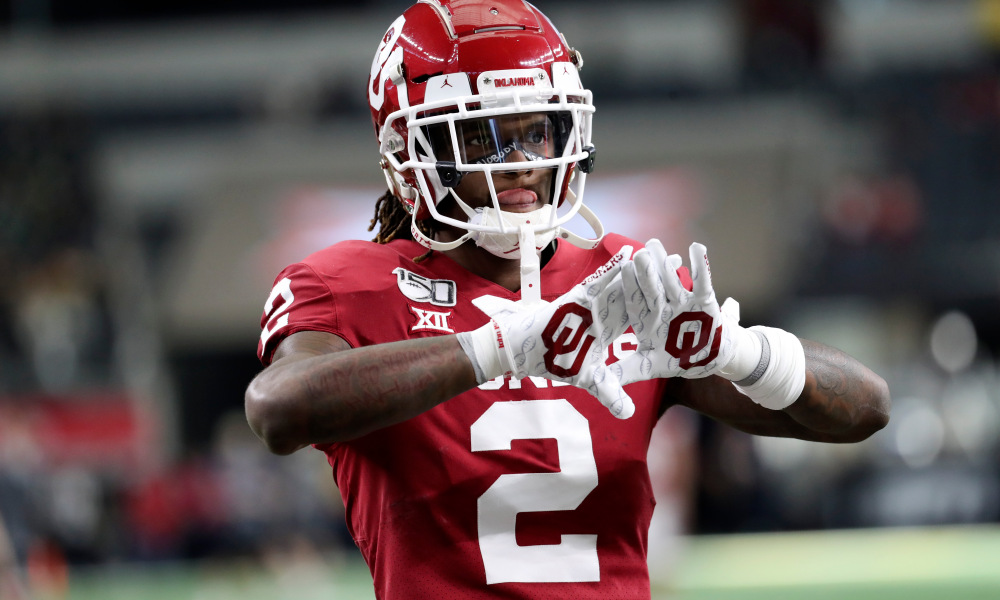
Please note: I took Jalen Reagor’s pro day numbers and weight and added an adjusted 0.05 on his 40-yard Dash time. I also decided to not include Laviska Shenault or K.J. Hamler, whose only contributions would have been weight gained.
The average improvement for a first round rookies’ testing numbers from leaving high school to entering the pros is represented in the table below (and I added a bonus; the average weight gained).

A few interesting nuggets to review and discuss:
First, the average weight gained by wide receivers is a rather hefty. A more introspective look will show that the data is not a one-size-fits-all average increase. A variable unable to be predicted is the frame of the body in relation to how much weight can be gained while staying athletic. It does bode well for Washington that he came in at 201-pounds his freshman year. The wide receivers who weighed 200-plus pounds entering college gained 22-pounds on average. Which would project him to meet the threshold of the weight requirement for an “alpha wideout.”
The average improvement for a 40-yard Dash time is 0.19 seconds, which would boost Washington’s already promising, size-adjusted 4.57 mark. An important disclaimer before we project him to run a 4.38 at the Combine: All-world rookie Justin Jefferson’s data set here throws a big curveball in the projection for 40-times, with an astounding improvement of close to half a second.
In surprise fashion, the 20-yard shuttle shows a decrease from high school to college. To Washington’s credit, he has such a fast shuttle time that a projected decrease would not bomb his Agility Score out of the break. Lastly, his vertical: he already posted a suitable vertical for a future NFL prospect. With an expected increase, it projects him to be put in an above average grouping. To play devil’s advocate, and looking at a small data subset, the NFL has an enormous number of wide receivers declare each year. With a small subset, these adjustments are not gospel. Instead, they are a guiding path to assist with projecting the potential profile Washington may boast as an NFL prospect.
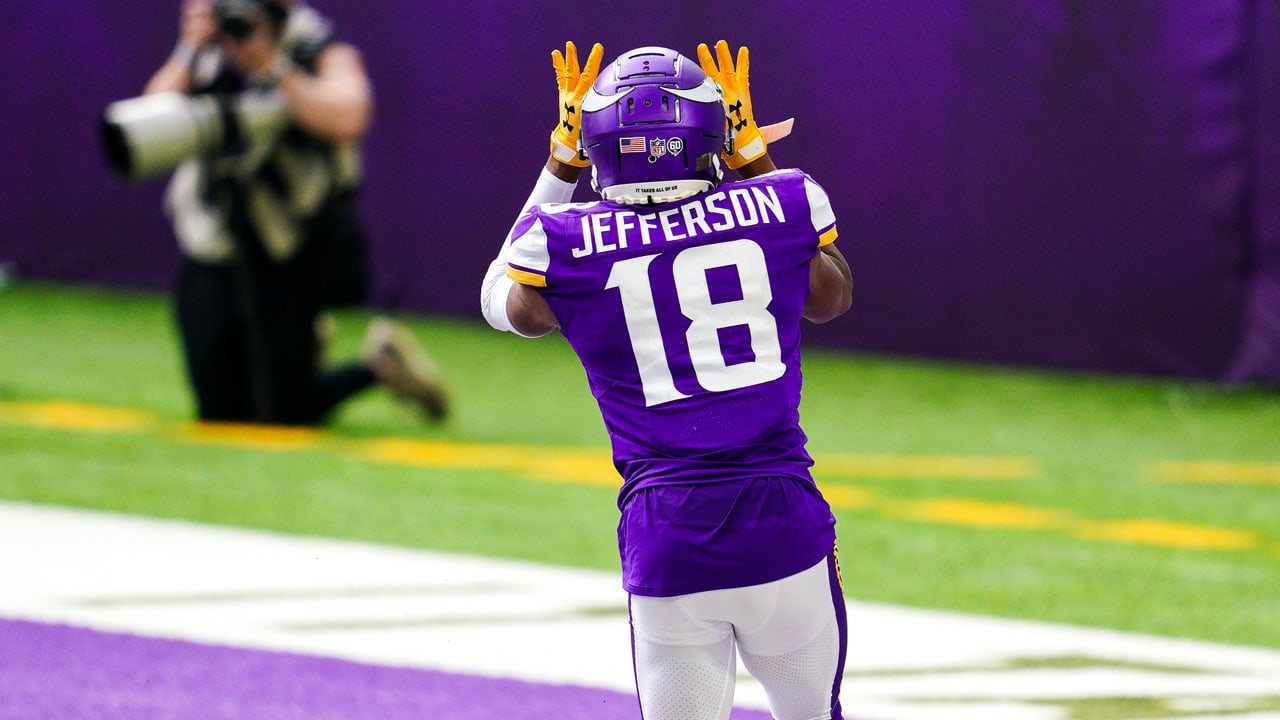
By creating a foundation for expected growth, there is a glimpse into Washington’s potential. Here is what his metrics project to look like in two to three years: 5-10, 218-pounds, 4.38-second 40-yard Dash, 4.31-second shuttle and 39.5 inch vertical. These metrics would place him into an above-average threshold. Which is another predictive measure I look for when evaluating a player without much of a collegiate sample size on the field.
What about Freshman Production?
Producing early matters
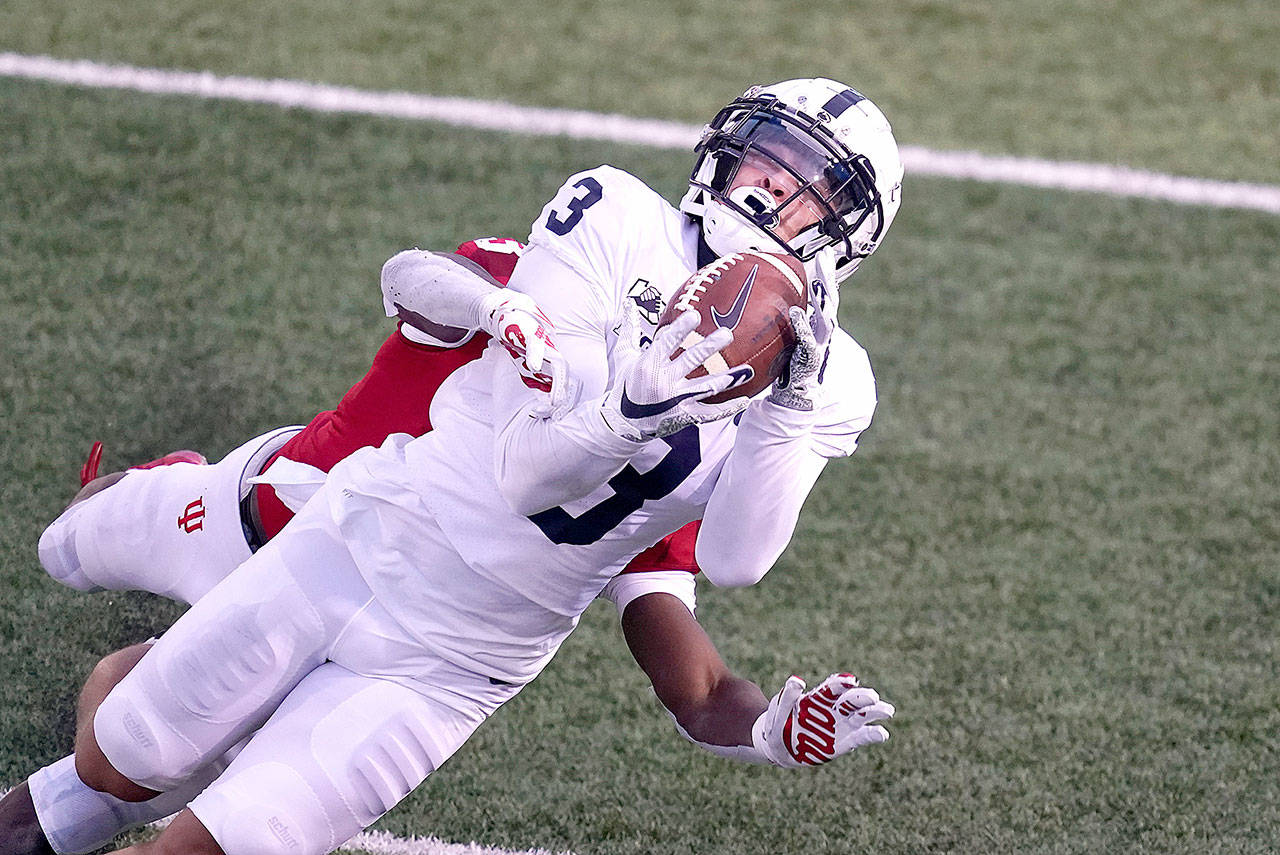
On the field for the Nittany Lions, Washington logged 36 receptions for 489 yards and six touchdowns in nine games. Though this netted him high marks in first-year College Market Share and College Dominator Rating, the latter is better used as a career model than a seasonal model. It feels nefarious to not include the fact that a large portion of the College Dominator Rating model weighs the prospect’s best season against their last season prior to the NFL Draft.
His career is far from over, but what has already been shown is that he is being involved in this offense and carving out a role for himself at a very early stage, which is another key predictive measure for being a successful wide receiver moving forward, and at the next level.
Parker Washington had 9⃣ receptions vs. Michigan – the most by a true freshman in a game in program history❕ @cpw_3 #WeAre pic.twitter.com/GBU8by7Nj2
— Penn State Football (@PennStateFball) November 30, 2020
Washington is also checking another important box to look for when evaluating collegiate prospects: being involved on special teams in the return game. Through nine games, he returned five kicks for 100 yards averaging 20.0 yards per return. Being asked to return kicks is a mega-indicator.
This is a guiding light that screams “this coach knows this player is dynamic” — DYNAMIC SCORE matters — and because of that, he wants to put them in open space to create explosive plays.
How’s The Film Look?
Numbers tell most of the story, but film plays a part, too
Some examples of play…
One storyline for me this season was who was going to emerge as Penn State's next best pass catcher? First Dotson broke out, now this past weekend it was Parker Washington. 5'10" 205, physical, solid catch radius and has YAC ability. #devy stock up. pic.twitter.com/ALQobaKcMO
— Brandon Lejeune (@DevyDeepDive) November 10, 2020
Think Penn State may have found a gem in freshman receiver Parker Washington.#Devy
— 🄼🄰🅁🄲 🄿🄾🅄🅂🅃 (@fatpoust) November 28, 2020
pic.twitter.com/TCAw76snWX
Not only is he getting involved but his handshake game is on point. Check the end of the video below.
tFR WR Parker Washington with a TD grab. #Devy pic.twitter.com/1g7lSr4n01
— Greg Brandt (@devywarehouse) December 5, 2020
The Verdict
So, you’re in a devy or College-2-Canton league — what do you do?
Evaluating freshman prospects is an exceedingly difficult task to perform accurately.
When prospects like Parker Washington start producing, curiosity arises. When they are able to grasp a large percent of their team’s College Market Share and College Dominator Rating so early on, attention is given.
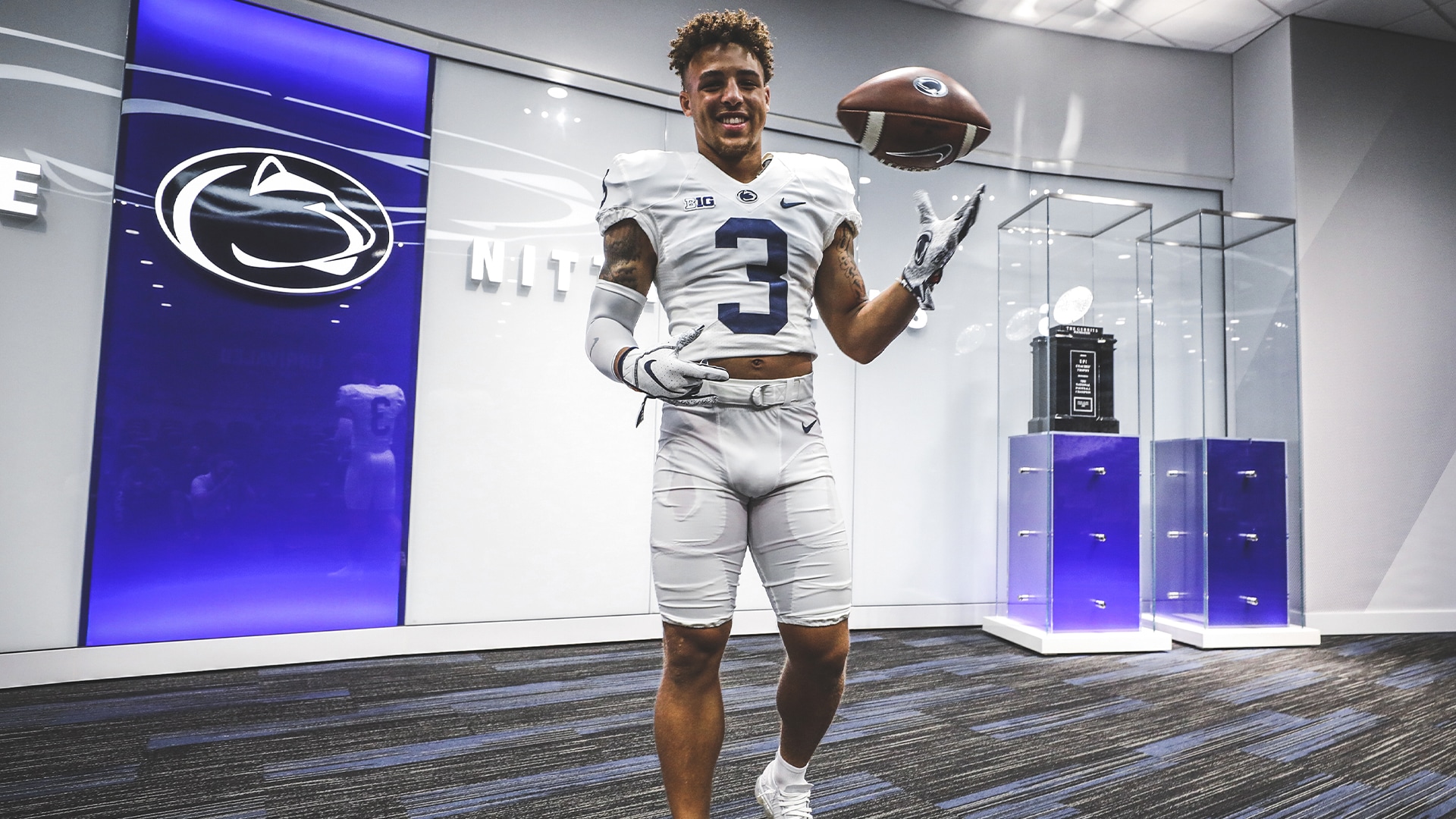
While he certainly has more to prove, his current projection is certainly on the proper trajectory to being a future Day 1 or Day 2 draft selection. For our purposes here in devy leagues, it is important to point out that his current ADP in C2C leagues is unranked. Take that as you will, and monitor closely moving forward.
Generally speaking, you want to be early on these types of players, not late.
Follow Britt Sanders on Twitter @The_Sandman25
